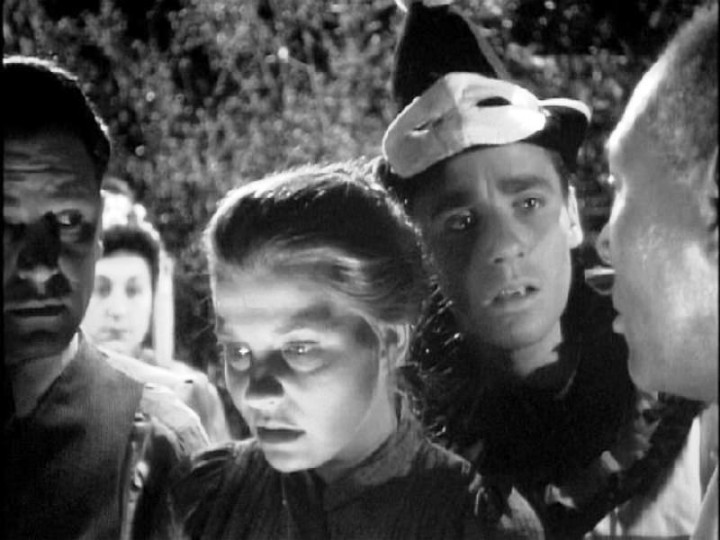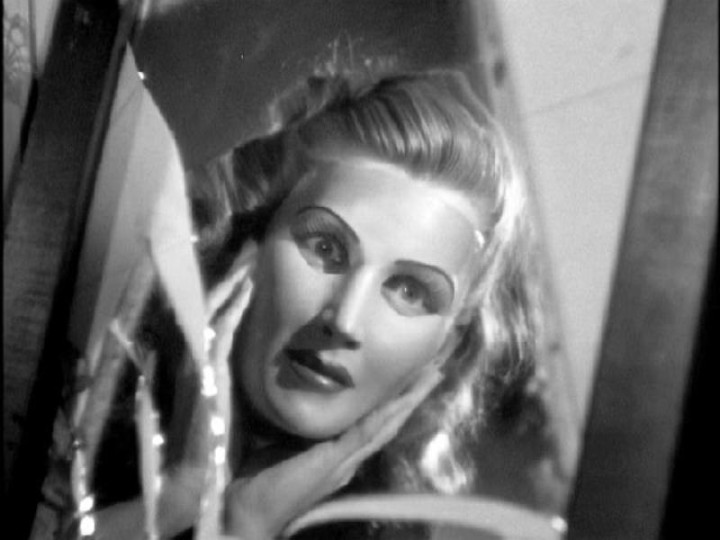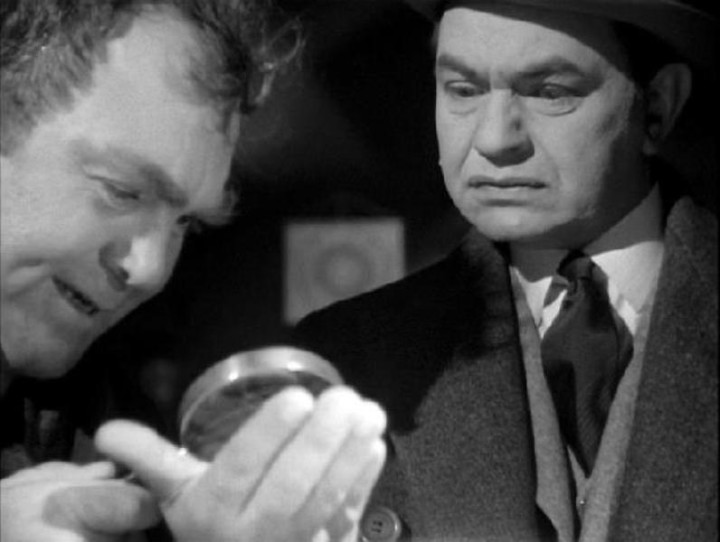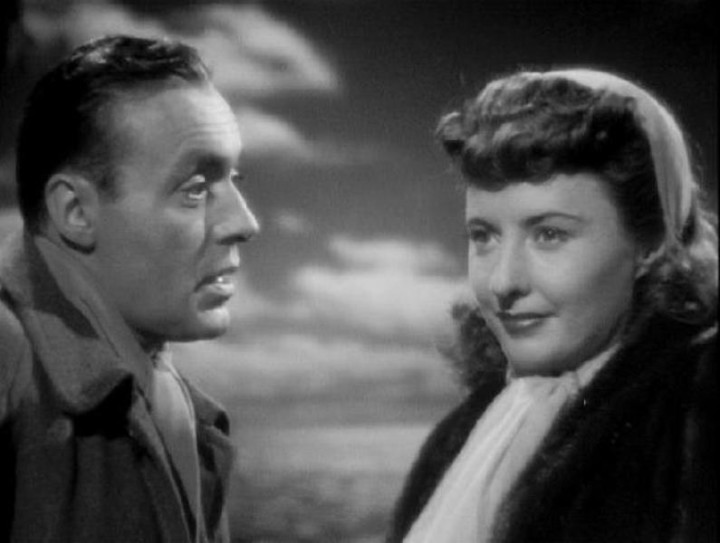Though largely forgotten today, Julien Duvivier was once a major force in French cinema — up there with Jean Renoir and René Clair. And like them, he spent the Nazi occupation of France working in Hollywood. (Unlike them, he had already worked in Hollywood.) His first films here had been big budget affairs for 20th Century Fox, so it’s a little curious as to how and why he landed at the more economical Universal Pictures in 1943 for Flesh and Fantasy, though it seems likely that Charles Boyer — who co-produced the film and had been in other Duvivier films — was probably the cause. Actually, Universal gave the film a pretty classy production — even bringing in Edith Head to do Barbara Stanwyck’s clothes (every one else had to make do with good old Universal stalwart Vera West).
The film was conceived as a quasi-supernatural themed attempt to duplicate the success of Duvivier’s Tales of Manhattan (1942). This also is a portmanteau affair, though the stories aren’t here connected as well. The first story did lead into the second (at least as originally conceived), and the third does lead into the fourth, but the whole thing was bracketed with a cute, but weak framing story with Robert Benchley being introduced to the stories by David Hoffman (best known as the floating head in the crystal ball at the openings of the Lon Chaney, Jr. “Inner Sanctum” movies). As originally shot — and assembled — there were four stories. The first of these was seen by preview audiences, who singled it out as the best. Either because they thought that sequence threw the film out of balance, or because they realized they could rework it (albeit clumsily) with some new non-Duvivier footage into a stand-alone movie, Universal cut the first episode. The opening of the film — which is still stronger than the rest — was originally the end of that segment and leads into what is now the first story.
Removing the episode certainly did correct the first story — a good-looking, sweet, but dramatically-lacking romantic fantasy with Bob Cummings and Betty Field — being too strong. But it also gets the film off to a kind of lackuster start. Fortunately, this is more than set to rights by the next story in which Edward G. Robinson becomes obsessed with a fortune teller’s (Thomas Mitchell) prediction that Robinson will commit murder. Oh, it’s pretty transparent how this will work out, but the performances and atmosphere are so good that it’s hard to mind that you’ll guess the twist before it happens.
This story does physically link to the final episode starring Boyer and Stanwyck. A bit longer than the others and by far the most elaborate, this climactic segment tries very hard, looks terrific, but just can’t stand up to the previous one. Boyer plays a tight-rope walker who has a premonition of his death by falling — a premonition that includes Stanwyck as a witness to his death. When he meets her shortly afterwards, you can imagine his unease. As I said, it’s well done — and it certainly does right by its glossy stars — but it’s not as compelling as it needs to be. So what we end up with is a mixed bag — all of it with merit, but only one sequence that truly stands out.
The Hendersonville Film Society will show Flesh and Fantasy Sunday, Aug. 17, at 2 p.m. in the Smoky Mountain Theater at Lake Pointe Landing Retirement Community (behind Epic Cinemas), 333 Thompson St., Hendersonville.







I’ve always wondered how much influence this film might have had on Britain’s legendary portmanteau film DEAD OF NIGHT which came along a couple of years later.
Probably some at least. I’m not sure what the history of such films is. I guess Waxworks was the first (assuming you don’t count Intolerance). The next one I can think of is If I Had a Million. I think my favorite such film is Duvivier’s Tales of Manhattan. I like its connecting device. Too bad Fox screwed up their DVD version by neglecting to put the W.C. Fields segment, which is strange since that version’s been on TV and was also on VHS.